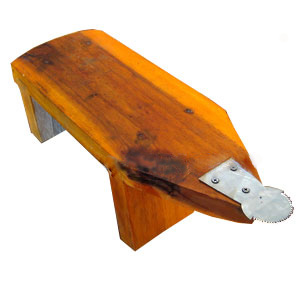How To Make Homemade Coconut Milk for Thai Curry (Nahm Gatee)
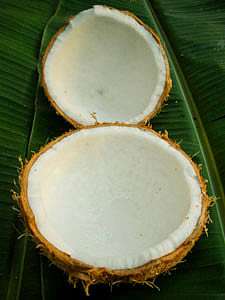 Coconut milk in Thailand has been traditionally made fresh daily, by hand. Every Thai family in the past owned a coconut grater. Small wooden stools, which you straddle like a horse, were once a part of every Thai kitchen. On one end is a small rounded very sharp metal grater.
Coconut milk in Thailand has been traditionally made fresh daily, by hand. Every Thai family in the past owned a coconut grater. Small wooden stools, which you straddle like a horse, were once a part of every Thai kitchen. On one end is a small rounded very sharp metal grater.
Previously an electric coconut grater was used only in the market for restaurants or street vendors, or to prepare for large parties. Now many modern Thais have this grater in their homes. A studded rotating knob sits inside a round galvanized wash tub with a motor on the back. It is incredibly noisy and requires strength to hold the coconut against the grater while it turns. Fast and furious, the gentle sound of hand grating is overpowered.
If you are not up to the task, substitute a can of coconut milk. Of course, nothing can compare to the subtleties of fresh coconut milk. Perhaps only the most expensive Thai restaurant would prepare curry this way in the West, and even then it is difficult to obtain a fresh coconut in the USA. In Thailand, in the past, almost every restaurant would prepare everything from scratch.
This is part of a recipe for making Red Thai Curry:
Part 1. The Coconut Milk
You will need:
- 1 medium to large size fresh coconut (shake to make sure there is liquid inside)
- A large kitchen cleaver - you will be using the blunt side of the blade.
If you are right-handed, cradle the coconut in your left palm, the eyes pointing towards the top of your fingers. Hold the cleaver in your right hand. Make a sharp quick blow to the midsection, with the back of the blade - the blunt side of the cleaver!
This should crack the coconut at it's natural fault line. If necessary, rap it again by rotating the coconut just a slight turn. Hit just an inch away from the original blow point. Use the sharp blade of the cleaver to pry in half.
The end result is 2 neat bowl-shaped pieces. The first time may not produce perfect halves. Don't despair, the aim is to grate the meat.
To grate the coconut the old fashioned way, straddle the coconut grater. Place a shallow bowl directly under the grater. Grasp one half of the coconut in both hands, the white meat towards you. Grate the meat, scraping downward repeatedly.
Use the movement in your wrists to hold the meat firmly against the grater. Count in series of ten, as you grate, if that helps. Rotate the coconut in the palm of your hand, so that the coconut is evenly grated on all sides.
Repeatedly grate the same small area in series of ten or twenty. Turn the coconut around and around as you complete each series of ten.
If you grate too much in one section, the coconut will be unbalanced. This makes it difficult to grate the rest of it.
Thais will complete the job before you, but they have been doing this every single day of their lives. Do it patiently and be careful not to cut yourself.
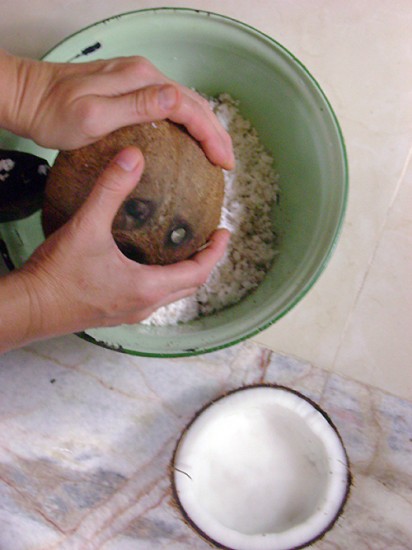
Continue grating until only the brown shell is left and all of the white meat is in the bowl.
Repeat with the other half (take turns with your friend). Discard the shells or be crafty and polish into a bowl (don't ask me how).
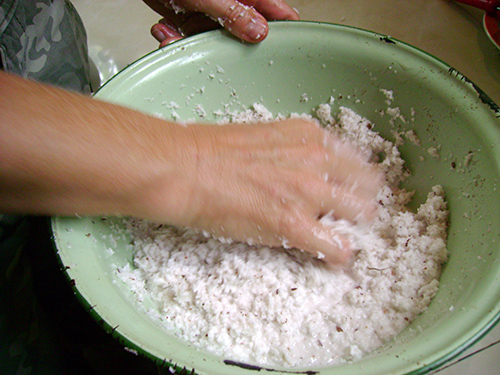
Into the shallow bowl, pour just enough water to cover the grated meat, approximately 1 1/2 cups, depending on the size of the coconut. Palpitate the coconut meat with both hands, to extract the juice. Strong hands work best. Do this for a few minutes. Then, wring out the water by squeezing the meat, one handful at a time. Place the squeezed meat into another bowl. Set the extracted coconut milk aside. Note in the South of Thailand, we use room temperature water, not hot water, and it works fine.
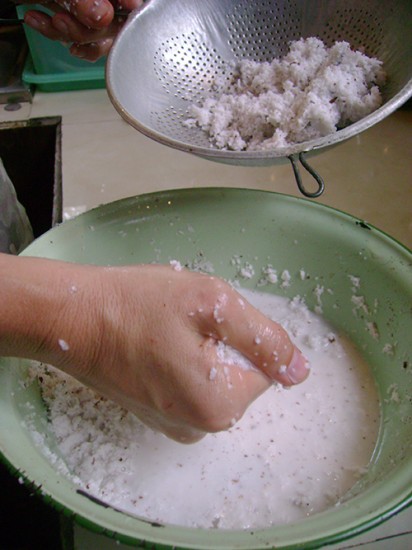
Repeat the process again, with just enough water to cover the coconut meat. This will get every bit of milk from the meat. Strain the extracted juice with a fine sieve to get rid of any coconut meat still remaining. Discard the meat (feed it to the chickens).
It is possible to make the coconut milk and curry paste a day in advance. Keep well sealed in the refrigerator.
Part 2. Homemade Red Curry Paste
Follow this link for the rest of the recipe for making Thai Red Curry.
- Buy Coconut Milk in our Thai food market
- More about coconut milk: Coconut Milk and Cholesterol
- How to make Coconut Cream from Canned Coconut Milk
Copyright © 2000 Temple of Thai

Coconut trees on Koh Samui, Gulf of Thailand, an island famous for coconuts.
- In our store: Fresh Young Coconut available now!

